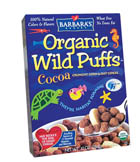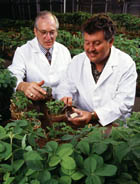

Looking ahead, development on the trans fat issue is likely to continue. Unlike fat-free and low-carb trends, epidemiologically driven issues like fat, cholesterol, sodium and fiber remain important, despite their ebb and flow in the media. Because the trans issue arises from technology, arguing on behalf of non-native trans fats in the diet is difficult, at best. As a result, marketers and developers will continue to face tough questions: Should products be reformulated to trans-free if quality is compromised? If quality is compromised, how much is acceptable? And presuming trans fat remains an issue, how should future ingredient technologies impact decisions developers are making today?
It Could Be Better
Approaches available to date have been insufficient to meet the cost and quality objectives in all food categories. Tools provided by suppliers thus far include:
Oils that are more stable may be blended with fully hydrogenated “hard stock,” partially hydrogenated oil, palm oil or other tropical oils. These may approximate the functionality needed for cookies, crackers and baked goods (which require plastic fats), but consumer concerns about saturated fat and tropical oils still appear to provide important limitations in their use.
Interesterification, either by chemical or enzymatic means, provides a way of altering solids content--without producing trans fatty acids.
Other non-fat approaches also may be used to deliver attributes and functionality including the use of gums, thickeners, bulking agents and other texture-modifying agents to resolve specific texture issues in trans-free foods. This approach may be complicated by the fact that replacing fat often increases the moisture content of foods--with the resulting microbiological, textural and shelflife issues.
Not a Perfect Answer
The major issues with available solutions are:
So, manufacturers need to complete their reformulation efforts to meet the January 1, 2006, deadline using today's available options. But, what does the future hold?
Of the approaches discussed above, only trait innovations will alter the marketplace options in a major way. Thus, this approach merits better understanding, so that developers can appropriately plan to utilize the resources it can provide and submit needed input to the developing varieties.
Breeding programs have been underway for most oilseed crops for a very long time. But, biotechnology techniques permitted seed developers to demonstrate a wide range of possibilities for enhanced seed oil compositions that could result directly from seed, rather than requiring processing to achieve the desired fatty acid composition. New screening methods applied to conventional breeding techniques have permitted seed breeders to bring those possibilities to commercial fruition--without biotechnology traits--in most cases. Thus, the breeding process has been greatly accelerated and can deliver relatively specific combinations of desirable traits to the marketplace.
The top near-term targets identified by the United Soybean Board's (USB, Chesterfield, Mo.) “Better Bean Initiative” for soybean trait modifications include:
These traits are being bred into seeds that also possess parity yield with commercial varieties, disease and pest resistance, and weed control benefits. Thus, when combining attributes in their breeding programs, seed designers are simultaneously considering the needs of the farmer and end user. This combined focus is crucial in providing economical oil options to the marketplace. The essential concept is to let the plant do most of the processing, so the extracted oil will not require substantial further processing (with the attendant costs).
Striving to Change the Future
One case in point is American biotechnology company Monsanto's (St. Louis) oilseed development program. The company reviewed its extensive seed (germplasm) library to identify the most commercially viable starting material likely to yield the desired improvements. Molecular markers were coupled with crop analytics to locate and trace the desirable traits. These techniques were applied to traditional breeding approaches, and accelerated again by year-round seed production, to permit the combination of statistically unlikely numbers and types of highly desirable traits. The oilseeds resulting from this effort deliver an improved fatty acid profile, while retaining the economically crucial agronomic traits to make these varieties viable for farmers.Finally, rather than waiting for seed replication to produce larger quantities of oil, Monsanto worked with industry food scientists to develop very small-scale application processing that would predict suitability for food production as early as possible in their breeding program. Thus, rather than strictly relying on analytical composition to guide their efforts, the seed scientists also sought real applications feedback. The successful introduction of a major new variety requires the significant input of seed scientists, biotechnologists, analytical chemists, farmers and food technologists.
Conventionally bred, reduced-linolenic acid beans are reaching the marketplace. These beans will provide oils with less than 3% linolenic acid (typically, soybeans contain 8%). This reduction is sufficient to significantly minimize or eliminate the need for hydrogenation in many applications currently using partially hydrogenated soy oil. Three major varieties are being offered, one each from Monsanto, DuPont (Johnston, Iowa) and Iowa State University (Ames, Iowa). More than 70 million pounds are expected to be available in fall 2005 from all three sources, with well over 400 million pounds available 2006, and more than one billion pounds available after 2007.
Because of the small-scale testing programs initiated by Monsanto, detailed performance and shelflife data for its oil variety already is available, even though oil availability (so far) has been limited. Tortilla chips were selected as one test application based on marketplace popularity, ease of controlled test execution compared to other products, relatively bland flavor of the base product and high oil absorption (which would likely magnify any faults in oil performance). A tightly controlled, small-scale simulation of continuously fried tortilla chips showed low linolenic acid soybean oil performed better than conventional or partially hydrogenated soy oil, and similarly to corn oil. Analytical and sensory tests were conducted on oil and tortilla chips over the frying period and over the shelflife of the tortilla chips. The benefits include:
n The behavior of Monsanto's low-linolenic soy oil was very similar and equally acceptable to corn oil.
The next generation of soybeans is approximately three years behind the low-linolenic varieties, with a commercial launch expected in 2008. Mid-oleic soybeans will offer 55%-60% oleic acid, while retaining the <3% linolenic acid level. This will provide a significant change in oxidative stability and shelflife--as compared to the low-linolenic oil. It also will provide an improved nutritional profile similar to canola oil, without its oxidative instability.
Third generation soy oil, slated to be introduced in 2012, goes one major step further, by reducing saturated fatty acids to 3%-5% (from the current 15%-16%). This is accomplished while retaining the <3% linolenic acid and increasing oleic acid concentrations to roughly 70%.
Future soy oilseed varieties under development include one with significantly increased levels of omega-3 fatty acids, items that offer intermediate oleic concentrations and products which are similar to tropical oils in their saturated fatty acid compositions. While these innovations will be realized in the more distant future, there are things developers can do now to influence the selection of the most appropriate combination of traits to solve development issues.
Seed designers--especially--need performance input as early in the seed development process as possible, so input on valid, very small-scale test protocols is particularly desirable. The timeframe for seed development also is such that seed designers are making decisions to influence the specific properties of oils to be introduced in 2010 and beyond. As a result, future innovations should be part of a user dialogue now--to meaningfully impact characteristics available to developers in the future.
There is an excitement in shifting oil processing from the manufacturing facility back to the farm. Food developers can have significant input regarding the variety and selection of oils truly tailored to meet certain performance needs. The future is finally here.
Leslie Skarra is president of Merlin Development, which provides high-quality, cost-effective research and development services. Merlin specializes in all technical aspects of food product development from concept through commercialization, including prototype development, formulation, scale-up, quality system design and production start-up. Skarra can be contacted at 763-475-0224, Lskarra@merlindev.com or www.merlindevelopment.com.
Readers interested in more information about low-linolenic soy oil test results, samples and providing input for future variety development should contact David Stark at Monsanto: david.m.stl.stark@monsanto.com.